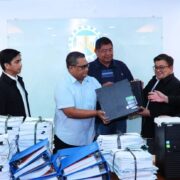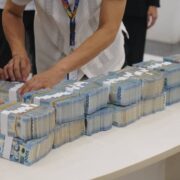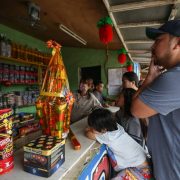DA: 500K MT rice imports coming as El Niño buffer
not be able to subsidize the agricultural inputs needed by local farmers, Marcos noted.“There is no shortcut to agricultural sufficiency. The government should fast-track the completion of irrigation facilities so long promised, build warehouses, food storage and an expanded cold chain,” she said.
Long-known remedies
The lawmaker added that the private sector must also invest in the countryside, especially in value-adding, processing and distribution.
“Our young farmers need to be provided consolidated farmland, agricultural machinery and training, access to capital and markets—everything we have known for a long time but still refuse to provide,” she said.
Marcos said the DA should also review the implementation of the repopulation program for areas affected by ASF by “realistically facing” the challenge of biosecurity for the country’s backyard hog raisers. INQ As of Dec. 14, the country has imported 3.22 million MT of rice this year, based on data from the Bureau of Plant Industry Almost 500,000 metric tons (MT) of imported rice will arrive in the Philippines between this month and February next year to boost local inventory in the wake of the dry spell caused by the El Niño phenomenon, the Department of Agriculture (DA) said in a statement on Wednesday.It said that 76,000 MT of rice from Taiwan and India are scheduled to enter the country until early January.
Taiwan has shipped 20,000 bags of rice (equivalent to 1,000 MT) before Christmas, representing half of the 40,000 bags donated by the Taiwanese government.
Another 75,000 MT of rice from India will be delivered from the last week of December to early January.
This is part of the 295,000 MT of rice earmarked by the Indian government to the Philippines in an accord brokered earlier.
The Philippines received the highest allocation from the Indian government when it announced last July plans to export 1.03 million MT of non-basmati white rice to seven countries, including Nepal, Cameroon, Côte d’Ivoire, Republic of Guinea, Malaysia and Seychelles.
The DA did not disclose the other shipments, with Agriculture Undersecretary Roger Navarro only saying that the nearly 500,000 MT of rice to be purchased abroad would be subject to standard importation rules and levied a 35-percent import duty.
Enough supply
Navarro noted that the country would have enough supply until the next harvest season begins in March with the arrival of the imported rice and the harvest by farmers in recent months.
The DA pegged national rice consumption at 36,000 MT a day or about 1.08 million MT a month.
As of Dec. 14, the country has imported 3.22 million MT of rice this year, based on data from the Bureau of Plant Industry.
Vietnam accounted for 2.81 million MT or 87.3 percent of the total, while India exported only 13,735 MT.
By virtue of Executive Order (EO) No. 50 signed by President Marcos on Dec. 22, the tariff rate on rice was retained at 35 percent until the end of 2024.
The President signed the order to keep food prices stable amid the ongoing El Niño phenomenon, the continuing prevalence of African swine fever (ASF) and the trade restrictions imposed by some countries.
The EO noted the current economic condition warranted the implementation of lowered tariff rates to maintain affordable prices, manage inflationary pressures, help augment the supply of agricultural commodities and diversify market sources.
Imee on tariffs
Sen. Imee Marcos on Wednesday frowned at the latest issuance by her brother to extend for another year the current rates of import duty on rice, corn, and meat products.
In a statement, Marcos, vice chair of the Senate committee on agriculture, food and agrarian reform, said the DA should have learned from the “failed scheme” of the past administration of lowering import tariffs that did not bring the promised results of lower prices of commodities.
“When the tariffs on meat, rice and corn were first lowered in 2021, the promise was to lower prices of these commodities. While runaway inflation has been arrested, prices have not fallen below the promised pre-2021 levels,” she pointed out.
“Today, as we anticipate the additional worldwide threat of El Niño, can [the government] persist with that failed scheme of cheap importation to lower food prices?” Marcos asked.
Imports no solution
She insisted that importation was not the solution to the country’s food security problems.
“Firstly, relying on imports and modifying the rates are not sustainable policies because other countries are limiting their exportation of food to serve their domestic needs first,” she said.
In addition, “much-reduced” government collection of import duties on rice, corn and meat products would not be able to subsidize the agricultural inputs needed by local farmers, Marcos noted.
“There is no shortcut to agricultural sufficiency. The government should fast-track the completion of irrigation facilities so long promised, build warehouses, food storage and an expanded cold chain,” she said.
Long-known remedies
The lawmaker added that the private sector must also invest in the countryside, especially in value-adding, processing and distribution.
“Our young farmers need to be provided consolidated farmland, agricultural machinery and training, access to capital and markets—everything we have known for a long time but still refuse to provide,” she said.
Marcos said the DA should also review the implementation of the repopulation program for areas affected by ASF by “realistically facing” the challenge of biosecurity for the country’s backyard hog raisers. INQ















